《交际英语教程》
| 作者 | 李筱菊主编 编者 |
|---|---|
| 出版 | 上海:上海外语教育出版社 |
| 参考页数 | 635 |
| 出版时间 | 1989(求助前请核对) 目录预览 |
| ISBN号 | 7810091603 — 求助条款 |
| PDF编号 | 810661038(仅供预览,未存储实际文件) |
| 求助格式 | 扫描PDF(若分多册发行,每次仅能受理1册) |
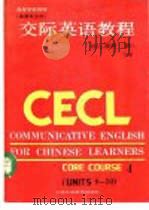
UNIT 6:SOCIAL PROBLEMS307
ⅠPOPULATION307
1 Comic strip—warm-up307
2The great population debate308
2.1 What Malthus says308
2.2 What the Neo-Malthusians and the Anti-Malthusians say308
2.3 Refuting an argument312
3Problems of population (1):China315
3.1 Prediction315
3.2 Reading for specific information315
3.3Reading for organization&language315
3.4+ Writing a summary315
3.5 Research315
4Problems of population (2):other countries317
4.1 Listening&note-making317
4.2 Population pyramids—information exchange317
4.3 Reading321
5Population control321
5.1 A report reading321
5.2 An interview—interaction323
5.3 A letter—writing326
ⅡUNEMPLOYMENT327
1 Warm-up327
2 Unemployment in the 30s327
3 Unemployment in the 80s335
4 Unemployment in the future336
ⅢSMOKING347
1 Class survey347
2Dangers of smoking348
2.1 TIMES article—reading348
2.2 Radio phone-in—listening349
3War on smoking352
3.1 Measures taken in Britain—reading352
3.2 Curbs and counter-curbs—reading353
3.3 Why isn’t smoking really being curbed?—reading&speaking356
3.4 How China stands—reading359
3.5 Is China determined to curb smoking?—listening360
3.6 Smoking control in China—writing361
3.7 Debate361
ⅣDRUGS362
1As a personal problem362
1.1 Why take drugs?—listening362
1.2 The effects363
1.3 Rehabilitation—listening364
1.4 Vocabulary gloss(1)364
2As a social problem365
2.1 Skimming365
2.2 Vocabulary gloss(2)365
3As an international problem367
3.1 Reading367
3.2 Discussion367
TAPESCRIPT369
UNIT 7:INTERNATIONAL RELATIONS377
ⅠINTERNATIONAL ORGANIZATIONS377
1 Groupings of nations—group work377
2The United Nations379
2.1 The Charter of the UN379
2.2 The organs of the UN380
2.3 The role of the UN—listening389
2.4 The crisis of the UN390
ⅡTHE ARMS RACE399
1 What is the arms race—reading399
2 The balance of power and deterrence—reading399
3The cold war—reading,listening,note-taking&group work401
3.1 Reading403
3.2 Listening&note-taking403
4The arms trade—reading, discussion&listening404
4.1 Suppliers and buyers—reading404
4.2 Pair work405
4.3 Risks—discussion408
4.4 Listening408
5 Nuclear proliferation—reading410
6Detente—reading&writing411
6.1 Reading411
6.2 Pair work412
6.3 Writing413
7Disarmament—reading,discussion&listening413
7.1 Reading413
7.2 Discussion414
7.3 Listening&discussion414
7.4 Radio speech:No nukes—listening&writing417
8 Discussion417
ⅢINTERNATIONAL AFFAIRS420
1Relations between nations420
1.1 News—skimming420
1.2 News broadcast—listening424
2China’s foreign policy427
2.1 CONVERSATION 1—listening427
2.2 Reading427
2.3 Role-play429
2.4 CONVERSATIONS 2&3—listening433
TAPESCRIPT434
APPENDIX444
UNIT 8:ECONOMICS AND TRADE450
ⅠBACKGROUND450
1Business prospects450
1.1 CONVERSATIONS 1—4:Talks about business prospects—listening450
1.2 Writing451
1.3 Labelling a graph451
2 Identifying themes in news articles—reading452
3A list of contents—reading&classifying455
4+ Key vocabulary—language work457
5China’s policies for trade cooperation457
5.1 Reading457
5.2 Listening460
5.3 Speaking460
5.4 Language work460
6The industrial base in China462
6.1 Crude oil—reading462
6.2 Coal and steel—groupwork463
6.3Coal production in China—reading for specific information468
6.4+ Steel production in China—writing468
7 Describing graphs—reading&writing468
8Light industry470
8.1 Prediction470
8.2 Listening for gist470
8.3 Listening for details470
8.4Interpreting statistics470
8.5+ Listening for language471
8.6* Extension471
9Trade473
9.1 Reading diagrams473
9.2 Interpreting graphs474
9.3 Reconstructing an interview474
9.4 Role-play475
10The Seventh Five Year Plan475
10.1 Reading&information exchange475
10.2 Development plans—giving talks481
10.3 Interpreting graphs481
ⅡSITUATIONS482
1 Key vocabulary — language work482
2At the Trade Fair482
2.1 DIALOGUE 1 — listening for gist&specific information482
2.2 Listening for language483
2.3 Reading&classifying483
2.4 Role-play484
2.5 Giving directions — role-play488
3Introductions488
3.1DIALOGUE 2 —listening for specific information488
3.2+Writing489
3.3+ Listening for language489
3.4 Role-play489
4Negotiation490
4.1 Reading&comparing490
4.2 Classifying492
4.3DIALOGUE 3 — listening493
4.4+ Language work494
4.5 Negotiations — role-play494
5Orders and letters of confirmation494
5.1 Reading for details494
5.2Reading for language495
5.3+ Writing496
5.4 A jumbled letter — reading496
6Setting up a deal498
6.1A letter of introduction — reading&note-making498
6.2+Reading for language499
6.3+ Writing499
7CONVERSATION 5:Introductions501
7.1 Structure of Atlantis Garments Corp.— listening501
7.2 Structure of Shanghai&Suzhou Silk Co.— pairwork501
8CONVERSATION 6:The meeting505
8.1 Listening for gist505
8.2Listening &note-making505
8.3+Listening for language505
8.4+ Writing506
9Answering the telephone507
9.1 Telephone messages—listening&note-making507
9.2 Discussion507
9.3 Listening&problem solving508
9.4 Oral practice—pairwork508
10A quick briefing508
10.1 Reading508
10.2 Classifying—pairwork509
10.3 DIALOGUE 4—listening517
10.4 Role-play517
11*Choosing the best medium of communication517
11.1 Preparation517
11.2 Discussion518
11.3Prewriting—pairwork519
11.4+ Writing519
TAPESCRIPT520
UNIT 9:MYTHS AND RELIGIONS533
ⅠMYTHS533
1Origins of myth—listening&speaking533
1.1 Pre-discussion533
1.2 Listening533
2Creation of the universe534
2.1 Pre-discussion534
2.2 Biblical myth—reading534
2.3Chinese myth—reading537
2.4 Greek myth+—reading539
2.5 Comparing myths541
2.6 Discussion541
2.7 Writing a report542
2.8 What the scientists say—listening542
2.9 Discussion543
3Greek and Roman mythology543
3.1 Introduction—reading543
3.2 The Olympians—reading546
3.3 Gods and goddesses—listening549
3.4 More gods and goddesses—reading and interaction554
3.5 Demigods and mortals—reading562
3.6 Heroes—debate project565
3.7 Classical mythology and the English language565
4Chinese myths and legends568
4.1 How much do you know about Chinese mythology?—matching568
4.2 Writing a caption569
4.3 Talking about a painting574
ⅡRELIGIONS584
1Monotheistic religions:Judaism,Christianity,Islam584
1.1 INTERVIEW 1— listening584
1.2 Prediction584
1.3 Reading, note-taking and information exchange586
1.4 Re-reading589
1.5 Re-listening589
1.6 INTERVIEW 2— listening589
1.7 Discussion point — speaking590
1.8 Follow-up590
2Indigenous religions of China593
2.1 Prediction593
2.2 Listening593
2.3 Reading&note-taking593
3Buddhism in China595
3.1 General knowledge — discussion595
3.2 Reading&note-making595
4Present attitudes to religion in China598
4.1 The offcial attitude — reading598
4.2 The Constitution in practice — scanning598
4.3 An interview with a bishop — listening603
4.4 The controversy over China’s religious policy — writing605
TAPESCRIPT613
APPENDIX623
UNIT 10:REVIEW626
INTRODUCTION626
STAGE 1:Planning626
STAGE 2:Research626
STAGE 3:Pooling research findings627
STAGE 4:Preparing the different parts of the report627
STAGE 5:Putting the report together627
STAGE 6:Presenting the report627
STAGE 7:Exhibition627
SUGGESTED PLANS for the PROJECTS628
PROJECT 1:SOCIAL PROBLEMS628
PROJECT 2:INTERNATIONAL RELATIONS631
PROJECT 3:ECONOMICS AND TRADE632
PROJECT 4:MYTHS AND RELIGIONS633
1989《交际英语教程》由于是年代较久的资料都绝版了,几乎不可能购买到实物。如果大家为了学习确实需要,可向博主求助其电子版PDF文件(由李筱菊主编 1989 上海:上海外语教育出版社 出版的版本) 。对合法合规的求助,我会当即受理并将下载地址发送给你。
高度相关资料
-
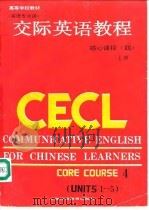
- 交际英语教程 核心课程 4 上
- 1989 上海:上海外语教育出版社
-
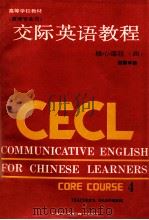
- 交际英语教程 (英语专业用)核心课程 四 教师手册
- 1989.01 上海外语教育出版社
-
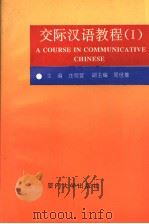
- 交际汉语教程 2
- 1993 厦门:厦门大学出版社
-
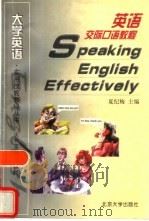
- 英语交际口语教程
- 1998 北京:北京大学出版社
-
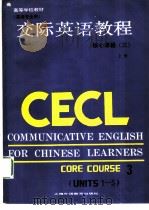
- 交际英语教程 核心课程 3 上
- 1988 上海:上海外语教育出版社
-

- 交际英语教程 2 核心课程 教师手册
- 1988 上海:上海外语教育出版社
-

- 交际英语
- 1982 广州:广东人民出版社
-

- 交际英语
- 1996 北京:外文出版社
-
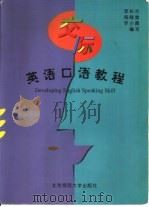
- 交际英语口语教程
- 1999 北京:北京师范大学出版社
-
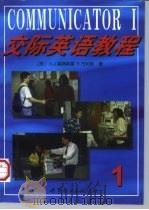
- 交际英语教程 1
- 1998 世界图书出版公司北京公司
-
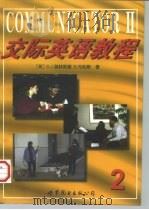
- 交际英语教程 2
- 1998 世界图书出版公司北京公司
-

- 英语交际口语
- 1993 南京:东南大学出版社
-

- 英语交际口语
- 1998 北京:今日中国出版社
-
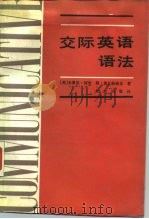
- 交际英语语法
- 1987 北京:北京出版社
-
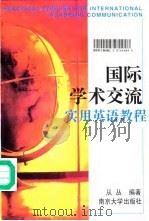
- 国际学术交流实用英语教程
- 1997 南京:南京大学出版社
提示:百度云已更名为百度网盘(百度盘),天翼云盘、微盘下载地址……暂未提供。➥ PDF文字可复制化或转WORD